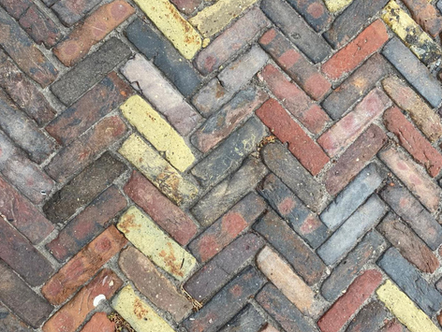New Zdvyzh Riverside Park for Borodyanka: a Park of Cultural Embroidery
Borodyanka is an ancient and quiet urban settlement, located northwest of Kyiv and at the foot of the Zdvyzh River, and was severely impacted by the Russian advance during the invasion of Ukraine in 2022. Following a barrage of missiles and mortar bombs, more than 90% of the city lay in ruins. Once known for its rich textile traditions and tranquil surroundings, it has become one of the most devastated cities in the Kyiv region.
In the context of rebuilding this city, the municipality has reached out to us to develop an important project aimed at providing peace and harmony to the residents of Borodyanka. This project will feature an urban park along the banks of the Zdvyzh River, designed to honor the deep traditions of the settlement and serve as a space for healing and the recovery of the Ukrainian spirit.
Project Type: Urban Park

Project Premises
The Place
Borodyanka, located on the banks of the Zdvyzh River, is a city with a rich history, first mentioned in documents dating back to 1190. Over the centuries, it has been a center of multiculturalism and traditional crafts, forging a unique identity marked by craftsmanship and popular culture. Although historically an agricultural village, Borodyanka has preserved valuable medieval traditions such as pottery, artisanal shoemaking, and especially two key pillars of its identity: brickmaking and the textile art of embroidery.
Borodyanka embroidery, recognized for its black, white, and red patterns, gave rise to one of Ukraine's most iconic textile traditions. In turn, brick production has visually and structurally defined the town's streets, squares, and churches. Both traditions are not only preserved in clothing but also permeate the urban landscape: brick pavements arranged in multiple angles and textures form paths and public spaces, creating a kind of “urban embroidery.”

Project Fundamentals
A Woven Park
A Place to Gather
A Replicable Economic Model
Our proposal revives the ancient traditions of Borodyanka through an amplified form of embroidery on a territorial scale: a park that celebrates the textures, materials, and patterns that make up the living memory of the place.
Through spaces dedicated to nature, recreation, sports, and culture, this proposal aims to reunite a community fractured and displaced from urban life by the effects of war. The park is conceived as a catalyst space to attract, activate, and encourage encounters.
The project represents a strategic opportunity to generate high-level technological collaboration with an impact on Borodyanka's green and sustainable economy that can become a replicable model at the regional and national levels.
Architectural Proposal
Our proposal aims to integrate the banks of the Zdvyzh River into the city of Borodyanka by developing a New Border Park— a public space designed to promote collective healing and reconnect the urban environment with nature and local culture.
This new cultural landscape presents a unique architectural opportunity to rediscover and highlight Borodyanka's resilient identity, which has historically been shaped by crafts such as pottery, brick construction, and textile art. The park not only honors this legacy but also proposes a spatial model where memory is transformed into everyday experiences.
Covering an area of 538,279 m², the park will host a variety of programs linked to local traditions, including fishing, sports, hiking, barbecues, and children's games. Each area will feature unique paving patterns inspired by traditional embroidery, utilizing bricks, laminated wood, and minimalist structures.
This embroidered park features various architectural elements—such as brick paths, prefabricated furniture, lighting, and trees—integrated into a cohesive and aesthetically pleasing sequence that connects the city, the river, and the local culture. The design is minimalist and respectful of the territory, allowing for 70% permeability and avoiding invasive modifications.
"The proposal integrates the city's tangible, intangible, and natural heritage, linking the past and present to foster peace, well-being, and the physical and mental health of the community in the future."








Rebuilding Peace, Health and Well-being through Boroyanka’s Cultural Landscape
Inspired by the textile motifs of Borodyanka, the pavements showcase embroidered patterns created with bricks of different sizes and orientations, serving as both symbolic and navigational features. These patterns define distinct routes with specific spatial intentions:
• The Fishermen's Path, which runs along the riverbank.
• The Children's Path, which safely meanders through the interior of the park and encourages play.
• The Central Boulevard, equipped with bike lanes, vegetation, and urban furniture, which efficiently connects key points of interest.
• A network of secondary paths that border the park, resembling threads in an urban tapestry.
The project is structured in seven chronological stages and aims to serve as a space for intergenerational reunion, intertwining memory, nature, and architecture into a coherent narrative of healing and community revitalization.
The park is designed as a platform for sustainable development, focusing on social, economic, and environmental aspects. It connects three key areas: Shevchenko Square, transformed into a museum of memory; a sports sector promoting healthy living; and three buildings (a restaurant, cultural center, and events pavilion) that boost local culture and economy. This layout encourages active, inclusive, and sustainable use of the park.
Economically, the project uses local resources, such as locally made bricks and laminated wood, supporting a sustainable forestry industry and benefiting both Borodyanka and other communities.
Environmentally, the park features bike paths, jogging trails, rainwater collection, material reuse, and low-impact wood design. The main building has an embodied carbon footprint of 141 kgCO₂e/m², promoting a restorative landscape.
In light of the impacts of war, the project includes underground shelters for protection during conflicts, enhancing emotional security and social resilience.
Economic, Social and Environmental Sustainability













